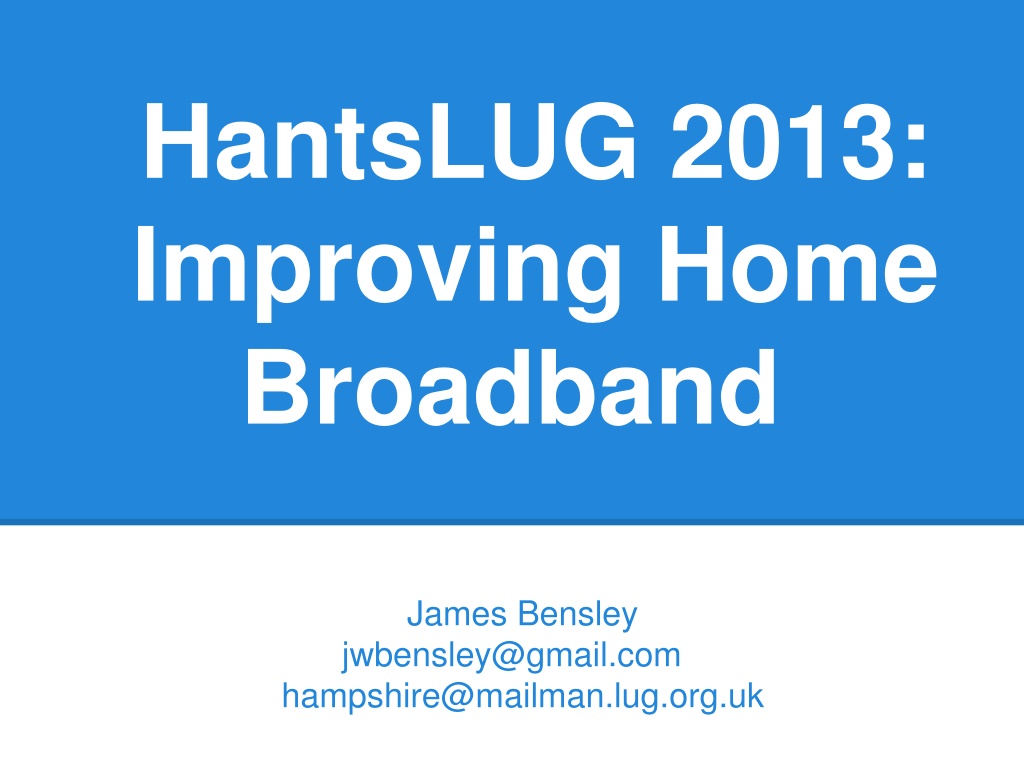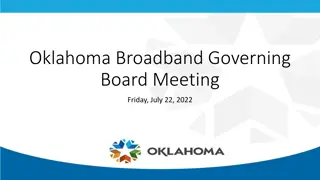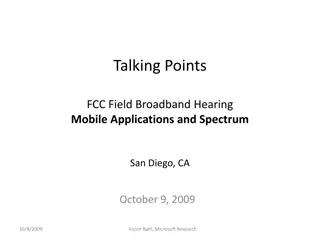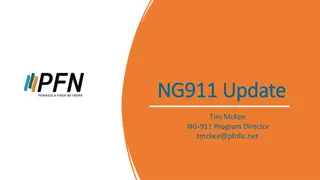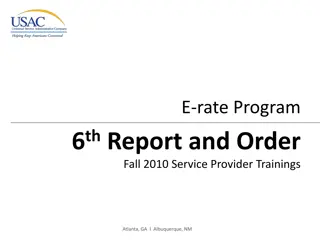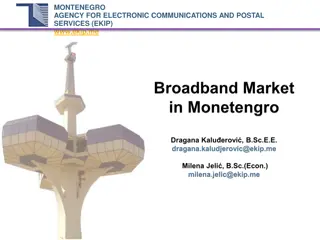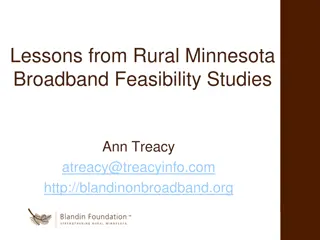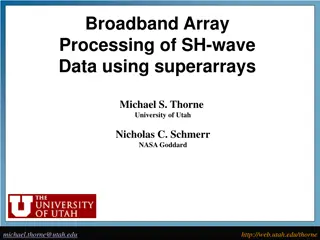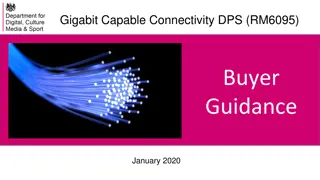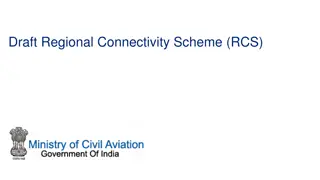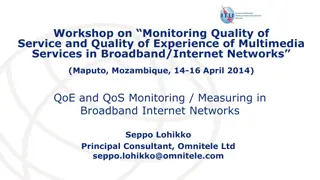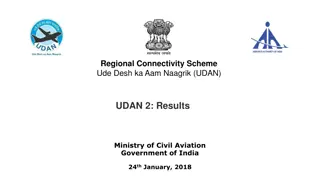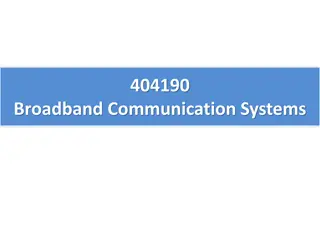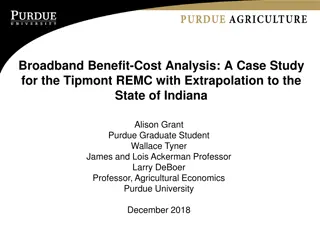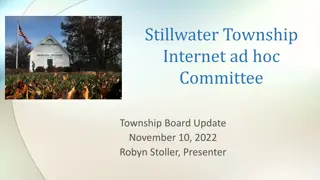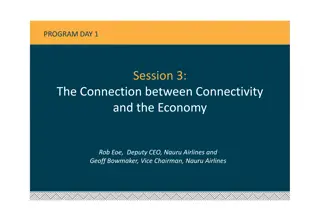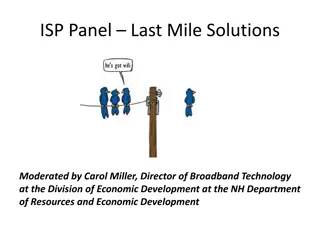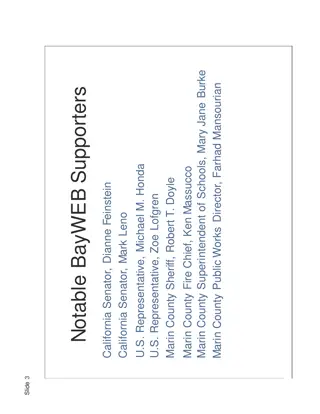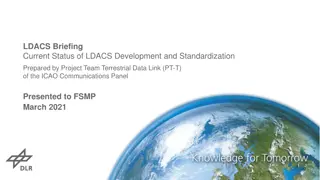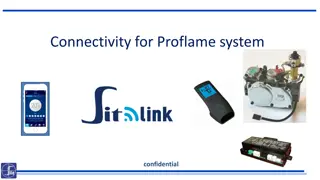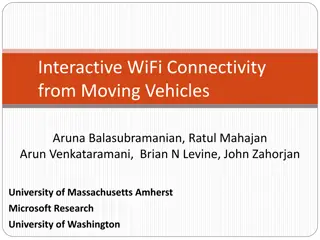Enhancing Home Broadband Connectivity: A Comprehensive Overview
Delve into the world of home broadband with a detailed exploration of its evolution, providers, delivery methods, and significance. Uncover the history, technologies, and future trends shaping the broadband landscape, offering insights into the vast potential and importance of high-quality connectivity in today's digital age.
Download Presentation

Please find below an Image/Link to download the presentation.
The content on the website is provided AS IS for your information and personal use only. It may not be sold, licensed, or shared on other websites without obtaining consent from the author. Download presentation by click this link. If you encounter any issues during the download, it is possible that the publisher has removed the file from their server.
E N D
Presentation Transcript
HantsLUG 2013: Improving Home Broadband James Bensley jwbensley@gmail.com hampshire@mailman.lug.org.uk
Broadband Recap A quick recap: What is Broadband? Who provides it? How is it delivered to us? Where does it come from? Why do we have it?
What Is Broadband? Narrow Band: 1991, March: Piped first UK dial-up Internet provider (ITU-T V.90/V.92). Horrible dying cat noises, picking up the phone could disconnect the connection (pre MoH), billed like a telephone call (i.e. 2p per minute), roughly 5-7Kbps max download speeds. 300Hz to 3.4kHz. Broadband: 2000-ish: BTW launch first ADSL offering (ADSL1/ADSL Max). Initial standardisations at 26kHz to 1,100kHz (ANSI T1.413 Issue 2 and ITU G.992.1 (G.DMT) & G.992.2 (G.Lite). Achievable download speeds of up to 700-800Kbps, later developed into ADSL2/2+ ITU G.992.3 onwards, Upto 24Mbps download using frequencies up to 2.2MHz
Broadband Frequencies Stolen from: http://en.wikipedia.org/wiki/G.992.3
Home Broadband Who provides it? BT Direct / Kingston (KCOM) / VirginMedia (NTL) Cable BT Wholesale: AAISP, Clara, Enta, Web Tapestry LLU Provider: O2/BE, Sky, TalkTalk, Virgin, Zen How is it delivered to us? Traditional copper technologies: ADSL, SDSL, VDSL Coax/Cable: DOCSIS TDM copper: ISDN2/30, PRI/BRI/E1 Where does it come from? Telephony line WiMAX/Metro Wifi 2G/3G/GPRS/HSDPA 4G/LTE
Why Broadband? Home Internet usage is on the up: Triple play services: 1 Provider = Voice, Broadband, TV Netflix is now >30% of all North American traffic, single largest Internet traffic source, slowly growing in the UK, Netflix UK < BBC iPlayer < 10% UK traffic YouTube >20% all mobile Internet traffic in Europe. 1B page views per day (2009), 72 hours of video uploaded every minute (2012) Increase in HD audio/video stream: BBC iPlayer, 4oD, Netflix, Lovefilm. Olympics 2012 Akamai average stream rate of 1,200Kbps. 100m mens final peak traffic for the entire event at 873Gbps. Akamai served 9,300 years of video in two weeks. Increase in VoIP: SIP accounts for ~5% of all UK calls between Q3-Q4 2012 LINX >1.6Tbps peak traffic rate, AMS-IX & DEC-IX >2Tbps
Measuring Improvement
Measuring Improvement Baseline: If you don't take one, you can't truly benefit www.speedtest.net speedtest.vostron.net traceroute/mtr ping (icmp/udp) Look at your stats: http://www.kitz.co.uk/adsl/linestats_explanation.htmsync rate/line rate attenuation signal-to-noise ration/SNR/noise margin receive/input power transmit/output power Monitoring: SNMP stats using Cacti or similar snmwalk/snmget if you have to HTTP interface
External Wiring Check for damaged street furniture Check at the premises partition between internal and external divide Storms and bad weather can and will affect your service due to the obvious, interference, additionally power surges can damage your modem/router and demolish telegraph poles! BT MBORC - Good ISP will relay this
Damaged Street Furniture Open VM Cab
Storms And Bad Weather Storm affected ADSL line
Last Mile Improvements All wiring, sockets, DPs, krone bays etc belong to BT. BT must look after them in accordance with their SLAs, NOT YOU! Check internal wiring Check bell wiring Check external wiring
Internal Wiring The "master socket" is the first socket the incoming BT line connects to upon entering the premises or breaking out from a DP Always use the master socket Disconnect secondary sockets Disconnect fax machines Avoid RedCare or Alarm Services
BT Sockets Typical BT/RedCare Connection Typical BT Openreach Socket
Worst Case Scenario Typical extension/junction box
Bell Wire "The Bell Wire picks up electrical interference that suppresses line speed and reduces stability of Broadband service. This problem impacts all homes with extension wiring to some degree" Remove the faceplate and remove the ring wire (typically pin 3), carefully to allow for later replace! Retrain can take 3-5 days for ADSL max/rate adaptive products
Home Wiring Improvements Shorten the ADSL cable (1 or 2 pair RJ11 cable) Try different filter or faceplate filter Avoid running Ethernet next to power Avoid installing poor quality cable and poorly terminating it
iPlate 10 (Max) for iPlate to circumvent the Bell/Ring wire
Microfilter Standard filter Low quality filter NTE5 filter
Wireless Improvements
Wireless Improvements Wireless standards: IEEE 802.11 A/B/G/N Wireless frequencies: 5GHz, 2.4GHz, 2.4GHz, 2.4GHz & 5 GHz Wireless interference: Alien devices, rogue access points Wireless channels (in Europe): 14 channels (11 usable) from 2.401GHz- 2.495GHz, Upto 300 channels (~20 usable) from 5.15GHz-5.725GHz. Wireless vendors & hardware: Reputable vendors, regular firmware & driver updates
Wireless Standards 802.11n, every time 802.11a: 5GHz @ 54Mbps, short distance/low barrier penetration 802.11.b: 2.4GHz @ 11Mbps, longer distance/higher barrier penetration 802.11g: 2.4GHz @ 54Mbps, longer distance/higher barrier penetration 802.11n: 2.4GHz & 5GHz @ from 54Mbps, to 300Mbps, now upto 600Mbps (not domestic yet), multi-antenna multi-frequency combo gives longer distance/higher barrier penetration
Wireless Frequencies 2.4GHz is cheap and commonly used, but it's better for wall penetrations, yet slower (802.11b offers up to 54Mbps, average is much lower). Many household items operate on the same/similar 2.4GHz frequency ranges: Other access points/routers! Amature radio equipment Bluetooth Car alarms Garage door openers, drive-way gate controls Microwaves Non-SSID-broadcasting networks Walkie talkies & Baby monitors
Wireless Interference Position within your premises in a central location: Think about walls and their composite materials (sheet metal), and their obstructions, radiators, filing cabinets, metal shelves. Raise it off the floor. 5GHz is a smaller wavelength and has more difficulties penetrating walls, switch from 802.11n 5Ghz to 802.11n 2.4Ghz, or run mixed Point the antenna(s) up vertically: Vertical plane has greater coverage that horizontal
Wireless Channels Change wireless channel: Check for overlapping channels, or simply jumpy around. NOTE: These are not always fixed! Robbed from: http://en.wikipedia.org/wiki/List_of_WLAN_channels
Wifi Analyzer App Free Android App: "Wifi Analyzer" by farproc "Shows the Wi-Fi channels around you. Helps you to find a less crowded channel for your wireless router."
Wireless Vendors & Hardware Reputable Vendors: Ubiquiti UniFi - http://linitx.com/product/13542Technicolor TG582n - http://www.technicolor.com/en/hi/digital- home/mediaaccess/dsl/wireless/adsl/technicolor-tg582n Routerboard products High gain and directional antennas: http://www.draytek.co.uk/products/aerials.html Update firmware of router/access point Software update: Update kernel, compile proprietary drivers, update wifi adapter firmware
Wireless Summary Switch to 802.11n/2.4GHz & 5GHz Adjust router positioning Check for interfering devices Change channels Use wireless extender Good hardware vendor Software updates Correct measurements (signal strength, throughput, delay)
Questions? James Bensley jwbensley@gmail.com hampshire@mailman.lug.org.uk
